Prévenchères in Lozère at the time |

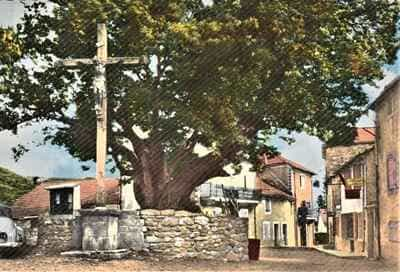 Holiday residence in Prévenchères at the time.
Holiday residence in Prévenchères at the time.
The village of Prévenchères is at 840 meters above sea level. It is a moderate elevation that is suitable for children. The climate is a bit windy, but not humid. The summer season lasts longer than inside the Massif Central, and this small village is beginning to become somewhat frequented during the summer. Even more than its altitude, it owes this to the ease of communication and to the proximity of Bas-Languedoc.
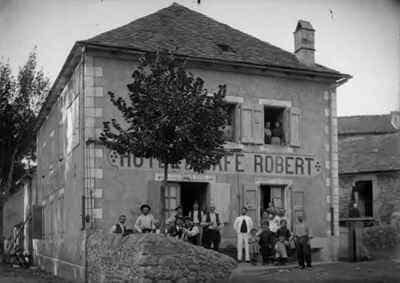 There are no buses, but the express services stop at the small station on the Nímes to Langogne line. The vacationers are almost all locals from Nímes and Alès, with some from Montpellier, Avignon, the Bouches-du-Rhône. Most are of middle class. Often mothers settle in for a month with their children. The husbands come to join them every Saturday. They spend Sunday with the family and return to their work on Monday.
There are no buses, but the express services stop at the small station on the Nímes to Langogne line. The vacationers are almost all locals from Nímes and Alès, with some from Montpellier, Avignon, the Bouches-du-Rhône. Most are of middle class. Often mothers settle in for a month with their children. The husbands come to join them every Saturday. They spend Sunday with the family and return to their work on Monday.
The health cure at Prévenchères.
In 1900 there were barely a dozen holidaymakers. The main of the two hotels built in 1898 had only 8 rooms and was hardly frequented except by travelers passing through. It has 29 today. In these hotels about 90 vacationers stay each year for three weeks or a month. 9 rental houses, almost all rebuilt since the war, each with two apartments, house about 80 people for part of the summer. The accommodations are expensive: 300 francs per room for the season. A holiday camp, a Catholic work set up by a priest from Montpellier, hosts 150 children and youths from the Montpelier, Béziers, Orange, Le Vigan patronages. It has developed mainly since the war. Finally the villagers or neighboring hamlets often welcome relatives who come to stay with them during the summer.
This summer season is a significant source of income for the commune. A five-room house yields 1500 francs. The farmers sell milk, butter, cheese, vegetables, poultry. The hotels employ staff. The villa-goers must leave a sum that can be valued at 100,000 francs during the season (price of 1936). Of this amount, more than half is net profit for the country.
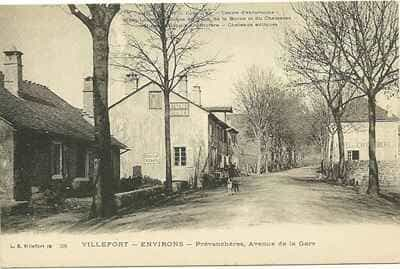 Placed between Villefort and La Bastide, more fashionable and more well-known, Prévenchères will hardly be able from this point of view to achieve a large development. But if there were a little more initiative, the vacationers would be more numerous. The supply is difficult. The butcher from La Bastide only comes twice a week. No vegetable sellers. One must run to the locals to obtain them. No doctor. In case of illness, one must telegraph to La Bastide or to Villefort. No comfort.
Placed between Villefort and La Bastide, more fashionable and more well-known, Prévenchères will hardly be able from this point of view to achieve a large development. But if there were a little more initiative, the vacationers would be more numerous. The supply is difficult. The butcher from La Bastide only comes twice a week. No vegetable sellers. One must run to the locals to obtain them. No doctor. In case of illness, one must telegraph to La Bastide or to Villefort. No comfort.
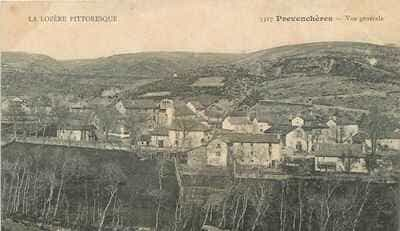 Electricity produced in the village barely lights it. No garage, only one gas station. No entertainment, not even a cinema. The banks of the Chassezac are green in places and the fishermen pursue trout there. Prévenchères could especially become more than it is a destination for children. A small quiet corner, at 800 meters, where one can breathe and play freely, is what best suits our hillside children who are exhausted by the heat in July-August.
Electricity produced in the village barely lights it. No garage, only one gas station. No entertainment, not even a cinema. The banks of the Chassezac are green in places and the fishermen pursue trout there. Prévenchères could especially become more than it is a destination for children. A small quiet corner, at 800 meters, where one can breathe and play freely, is what best suits our hillside children who are exhausted by the heat in July-August.
***
In the village of Prévenchères a baker has settled. But he only makes wheat bread for part of the population and for the summer visitors. All the peasants of the village knead their dough and come to bake rye bread in the baker’s oven once a week, on Wednesdays. However, flour supplies are almost always insufficient, so on Sundays, or on feast days, one or two times per week, bread is bought from the baker. After rye, the main crop is potatoes. They are still not enough for a family’s food. Each owner has a garden. Some meadows provide hay for the winter. These meadows are sprinkled with apple trees, plum trees and a few peach trees. They are sometimes bordered by walnut trees.
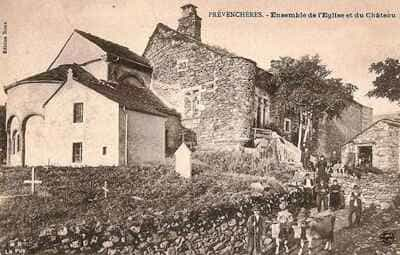 The crops provide the family’s food. Large tracts of land can only be used for sheep grazing. The rock often outcrops. Many slopes are crumbling. The plateaus are dry. The bottoms of the valleys are sometimes too humid. The cultivable lands are very limited. Thus the cultivation remains here, as it once was for all of France, a necessity for feeding people.
The crops provide the family’s food. Large tracts of land can only be used for sheep grazing. The rock often outcrops. Many slopes are crumbling. The plateaus are dry. The bottoms of the valleys are sometimes too humid. The cultivable lands are very limited. Thus the cultivation remains here, as it once was for all of France, a necessity for feeding people.
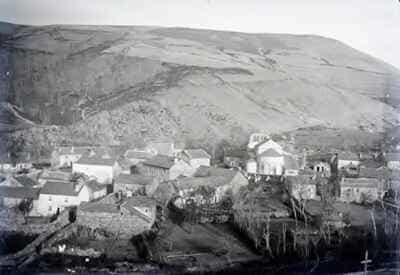 Fields marked "arable land" on the old cadastre are now fallow. Yew trees have grown; they are cut for the baker. Rye alone can grow in these clayey cols. We scarcely sow to reap food for the year and for the next sowing. Each owner sows 1 to 3 hectares of rye. Agricultural statistics of 1918 show 4 out of 76 owners sowing more than 3 hectares. The maximum is 5. A hectare yields about 4 or 5 double decalitres. Each double decalitre yields 4 or 5, at most 8. This is not enough for feeding a family of five in a country where bread is heavily consumed.
Fields marked "arable land" on the old cadastre are now fallow. Yew trees have grown; they are cut for the baker. Rye alone can grow in these clayey cols. We scarcely sow to reap food for the year and for the next sowing. Each owner sows 1 to 3 hectares of rye. Agricultural statistics of 1918 show 4 out of 76 owners sowing more than 3 hectares. The maximum is 5. A hectare yields about 4 or 5 double decalitres. Each double decalitre yields 4 or 5, at most 8. This is not enough for feeding a family of five in a country where bread is heavily consumed.
***
The need to defend against wolves may have been one of the reasons for the grouping of each village. Wolves were numerous in the region in the past. In 1806 a wolf carried off a five-year-old child near Villefort, and three days later a little girl near Génolhac.
It is written in 1815: “For the past five years, wolves have devoured more than 60 children in the communes bordering the Villefort canton.” On January 18, 1823, a farmer traveling from Prévenchères to La Bastide was accompanied for three hours by a wolf. To combat these wolves, bounties were paid to those who killed them: in 1815, 54 francs for a full-grown she-wolf, 36 francs for a wolf, 45 francs for a non-full-grown she-wolf, 18 francs for a young wolf, 9 francs for a cub.
Former holiday hotel with a garden along the Allier, L'Etoile Guest House is located in La Bastide-Puylaurent between Lozere, Ardeche, and the Cevennes in the mountains of Southern France. At the crossroads of GR®7, GR®70 Stevenson Path, GR®72, GR®700 Regordane Way, GR®470 Allier River springs and gorges, GRP® Cevenol, Ardechoise Mountains, Margeride. Numerous loop trails for hiking and one-day biking excursions. Ideal for a relaxing and hiking getaway.
Copyright©etoile.fr